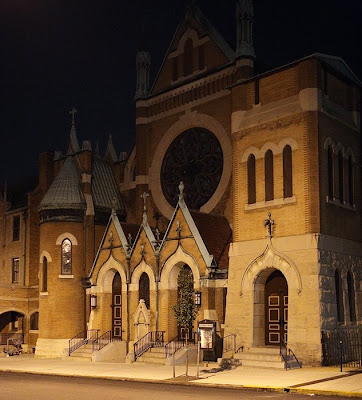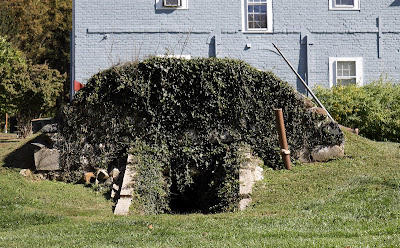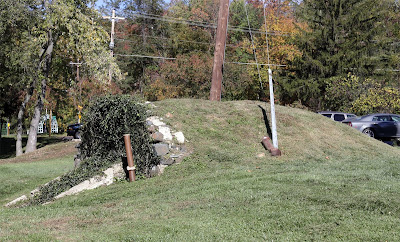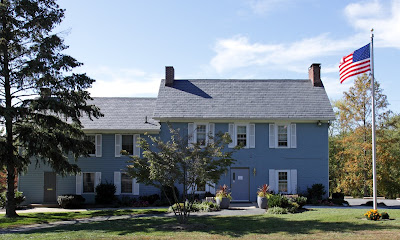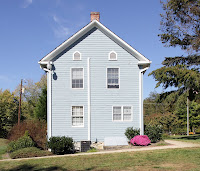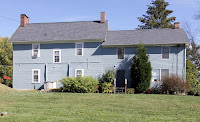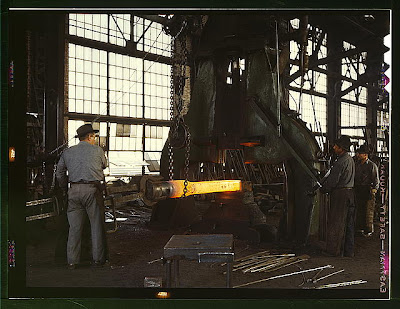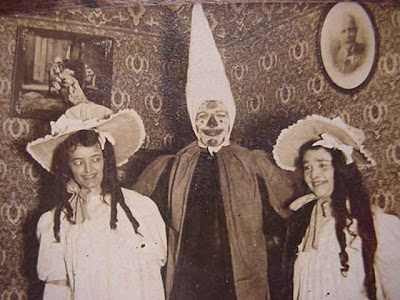Oct 31, 2008
Oct 30, 2008
Depression Diary: Benjamin Roth's chilling chronicle of hard times
When the stock market crashed in 1929, he had been practicing law for approximately 10 years, largely representing local businesses. After nearly two years, he began to grasp the magnitude of what had happened to American economic life, and in June 1931, he began writing down his impressions in a diary that he maintained intermittently until he died in 1978. His perceptions and experiences have a chilling similarity to our own era, and The Big Money believes that Roth's words—though they are 75 years old—have much to teach us today; we'll be serializing several excerpts.
Here is the first installment: Continued
Photo: Dorothea Lange
R. R. Furman, 93, Dies; Led Bomb-Project Spying
 (NYTimes) - Robert R. Furman, a former Army major who as chief of foreign intelligence for the American atomic bomb project in World War II coordinated and often joined harrowing espionage missions to kidnap German scientists, seize uranium ore in Europe and determine the extent of Nazi efforts to build the bomb, died Oct. 14 at his home in Adamstown, Md. He was 93. Continued
(NYTimes) - Robert R. Furman, a former Army major who as chief of foreign intelligence for the American atomic bomb project in World War II coordinated and often joined harrowing espionage missions to kidnap German scientists, seize uranium ore in Europe and determine the extent of Nazi efforts to build the bomb, died Oct. 14 at his home in Adamstown, Md. He was 93. Continued
St. Mary's Church product of 19th-century York County language wars
For example, the debate over whether services would be conducted in English or German caused St. Paul's Lutheran (English) to separate from mother church Christ Lutheran and Trinity German Reformed (English) to separate (at least in part) from what is today called Zion German Reformed or Zion United Church of Christ.
York's Catholic congregation dealt with the language issue in the opposite fashion. The mother church (English) is called St. Patrick's today, but St. Mary's Church was built in 1852 to accommodate German-speaking Catholics... Continued
Photo: Nightening
Leon Day
 (Wikipedia) - Leon Day (October 30, 1916 - March 13, 1995) was an American right-handed pitcher in the Negro Leagues. He played for the Baltimore Black Sox, the Brooklyn & Newark Eagles, and the Baltimore Elite Giants.
(Wikipedia) - Leon Day (October 30, 1916 - March 13, 1995) was an American right-handed pitcher in the Negro Leagues. He played for the Baltimore Black Sox, the Brooklyn & Newark Eagles, and the Baltimore Elite Giants.
He was born in Alexandria, Virginia. Day is noted for pitching a perfect season in 1937 (13-0) while playing for the Newark Eagles, and for his fastball. Day was also a good hitter and baserunner, batting .320 in 1937. Continued
Oct 29, 2008
Oct. 29, 1675: Leibniz ∫ums It All Up
 1675 (Wired): Gottfried Leibniz writes the integral sign ∫ in an unpublished manuscript, introducing the calculus notation that's still in use today.
1675 (Wired): Gottfried Leibniz writes the integral sign ∫ in an unpublished manuscript, introducing the calculus notation that's still in use today.
Leibniz was a German mathematician and philosopher who readily crossed the lines between academic disciplines. He had a doctorate in law, served as secretary of the Nuremberg alchemical society and fancied himself a poet. Continued
Oct 28, 2008
The 25 Best News Photographs
 "In honor of Vanity Fair’s 25th anniversary, the magazine’s editors flexed their list-making muscles to determine the 25 best of everything—from book covers and documentaries to parties and political one-liners. Herewith, the top 25 news photographs." Continued
"In honor of Vanity Fair’s 25th anniversary, the magazine’s editors flexed their list-making muscles to determine the 25 best of everything—from book covers and documentaries to parties and political one-liners. Herewith, the top 25 news photographs." Continued
Bowie Kuhn
 (Wikipedia) - Bowie Kent Kuhn (October 28, 1926 – March 15, 2007) was an American lawyer and sports administrator who served as the 5th commissioner of Major League Baseball from February 4, 1969 to September 30, 1984. He served as legal counsel for Major League Baseball owners for almost 20 years prior to his election as commissioner.
(Wikipedia) - Bowie Kent Kuhn (October 28, 1926 – March 15, 2007) was an American lawyer and sports administrator who served as the 5th commissioner of Major League Baseball from February 4, 1969 to September 30, 1984. He served as legal counsel for Major League Baseball owners for almost 20 years prior to his election as commissioner.
Kuhn was born in Takoma Park, Maryland, grew up in Washington, D.C. and graduated from Theodore Roosevelt High School. Continued
Oct 27, 2008
Oct 26, 2008
Oct 25, 2008
Young America’s Wild Side

(NYTBR) - On March 3, 1801, Thomas Jefferson intoned at his presidential inauguration, “We are all Republicans: we are all Federalists.” Then, addressing himself as much to future generations as to the crowd before him, he added, “I believe this . . . the strongest government on earth.” Yet with the passing of the founders, the Federalists would cease to exist as a political party, and by 1861 the nation would be engaged in a terrible civil war. What happened in the intervening years? More often than not, historians treat this period with a wave of a hand, as little more than the run-up to the unbridled struggle between North and South. In his latest book, “Waking Giant: America in the Age of Jackson,” David S. Reynolds, a professor at the Graduate Center of the City University of New York and the author of “John Brown, Abolitionist,” among other books, asks us instead to more carefully consider the brawling, chaotic, boisterous years from 1815 to 1848 as a fascinating age in its own right. In this, he succeeds handsomely. Continued
Katharine Byron
 (Wikipedia) - Katharine Edgar Byron (October 25, 1903 – December 28, 1976), a democrat, was a U.S. Congresswoman who represented the 6th congressional district of Maryland from May 27, 1941 to January 3, 1943. She was the first woman elected to Congress from Maryland. Continued
(Wikipedia) - Katharine Edgar Byron (October 25, 1903 – December 28, 1976), a democrat, was a U.S. Congresswoman who represented the 6th congressional district of Maryland from May 27, 1941 to January 3, 1943. She was the first woman elected to Congress from Maryland. Continued
Hog and Hominy
 Of all the things we eat at my house, the one that gets the most comments from strangers is a simple dish of sausage patties, hominy (Manning's), and applesauce (White House).
Of all the things we eat at my house, the one that gets the most comments from strangers is a simple dish of sausage patties, hominy (Manning's), and applesauce (White House).
I've always eaten it, my mom has always eaten it, and her mom always did too. I imagine it's as old as America itself. Sometimes I wonder if we're the only ones left who do eat it? We eat hominy in posole too, but that's from a little west of here, and a very old dish too. It's the only two things I know to do with hominy.
The other thing I have learned not to serve to strangers is scrapple, especially with King Syrup.
Oct 24, 2008
The value of my house appears to be plummeting
I've always said that it's better to read about historic times than to live in them and here's proof. I plugged my address into Zillow.com to see what they had it valued at and it wasn't a pretty sight. It has gone from around $355k to $308k since July. The graph says it all.
For what it's worth, I had the house appraised a couple of years ago (back in the bubble), and the appraisal came close to matching Zillow's numbers.
Wall Street Crash of 1929
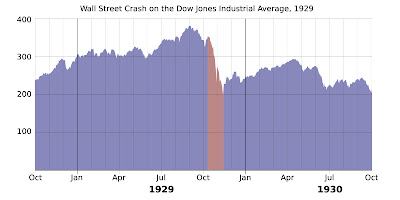
(Wikipedia) - The Wall Street Crash of 1929, also known as the ’29 Crash, the Crash of 1929, the Great Crash of 1929, the Great Crash of October 1929, the Great Wall Street Crash of 1929, 1929 Great Crash, or the Great Crash, was the most devastating stock market crash in the history of the United States, taking into consideration the full extent and longevity of its fallout.
Three phrases - Black Thursday, Black Monday, and Black Tuesday - are used to describe this collapse of stock values. All three are appropriate, for the crash was not a one-day affair. The initial crash occurred on Black Thursday (October 24, 1929), but it was the catastrophic downturn of Black Monday and Tuesday (October 28 and 29, 1929) that precipitated widespread panic and the onset of unprecedented and long-lasting consequences for the United States. The collapse continued for a month. Continued
Graph: Wikipedia
Log Cabin Campaign Headquarters in York
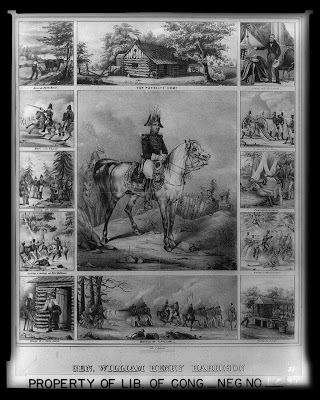
(Universal York) - In 1840 Democrats derisively campaigned that the Whig candidate for President, William Henry Harrison, would be more at home in a log cabin. The Whigs seized the idea and used it as a symbol, giving the idea that Harrison was one of the common people.
That wasn't exactly correct, seeing that Harrison was the son of a Virginia planter, college educated and a career army officer before he got into politics. Continued
Photo: Library of Congress
Silo Point open to public this weekend
Following an invitation-only grand opening Thursday night, the public will be able to tour the former grain silo in Locust Point that Turner has converted into 222 condos. Continued
Photo: MDRails
Enolia McMillan
Enolia Pettigen McMillan (October 20, 1904 – October 24, 2006) was the first female national president of the NAACP.
... She became a teacher in 1927 in Caroline County, Maryland. McMillan received a master's degree in 1933 from Columbia University. Her thesis was entitled Some Factors Affecting Secondary Education for Negroes in Maryland Counties (Excluding Baltimore). Continued
Oct 23, 2008
West Liberty Methodist celebrating 220 years
(North County News) - Their brick church in White Hall is a mere 110 years old, but members of West Liberty United Methodist Church will celebrate an anniversary twice that.
The West Liberty congregation and its pastor, the Rev. Bruce Frame, are hosting an all-day event Oct. 26 to commemorate their 220-year history. The worship service begins at 10:30 a.m. and is open to all. Music, singing and food are planned both before and after the service. Continued
Oct 22, 2008
The Bell Telephone Hour
We watched these old shows for hours and hours and hours when I was in elementary school, back in the 70's - even then they were ancient. This one's from 1958.
Panic of 1907

(Wikipedia) - The Panic of 1907, also known as the 1907 Bankers' Panic, was a financial crisis that occurred in the United States when its stock market fell close to 50 percent from its peak the previous year. Panic occurred during a time of economic recession, when there were numerous runs on banks and trust companies. The 1907 panic eventually spread throughout the nation, and many state and local banks and businesses entered into bankruptcy. Primary causes of the run included a retraction of market liquidity by a number of New York City banks, a loss of confidence among depositors, and the absence of a statutory lender of last resort. Continued
Photo: "A crowd forms on Wall Street during the Bankers Panic of 1907." New York Public Library
Oct 21, 2008
All’s Quiet on the Octoraro Branch Line

(WoCCP) - On an uneventful afternoon for most people in northern Cecil County, 7-year-old Catherine Kirk waited excitedly at the Rising Sun Train Station. As the appointed time approached and anticipation grew, a shrill steam whistle coming from somewhere down the line toward Colora pierced the quiet of the town. The whistle of the local passenger train bound for Oxford and points north was a welcomed sound for young Catherine whose mother had just dropped her off at the depot. She was taking her first ride on the rails, the 94-year-old Rising Sun resident recently recalled. Continued
 Colora Station, Canon EOS 30D & EF-S 17-55 f/2.8 IS lens
Colora Station, Canon EOS 30D & EF-S 17-55 f/2.8 IS lensOct 20, 2008
Charley Chase
Born Charles Joseph Parrott in Baltimore, Maryland, Chase started his career in films by working at the Christie Comedies in 1912. He then moved to Keystone Studios, where he began appearing in bit parts in the Mack Sennett films, including those of Charlie Chaplin. By 1915 he was playing juvenile leads in the Keystones, and directing some of the films as "Charles Parrott." His Keystone credentials were good enough to get him steady work as a comedy director with other companies; he directed many of Chaplin imitator Billy West's comedies, which featured a young Oliver Hardy as villain. Continued
Photo: THE WORLD OF CHARLEY CHASE
Roald Dahl and the British Spy Ring in Wartime Washington
 (NYTBR) - Roald Dahl is famous for his mischievous children’s stories. But as Jennet Conant reports in “The Irregulars,” he was also a British spy. Conant, who has written popular accounts of the secret development of radar and the atomic bomb, shows that Dahl, a former R.A.F. hero, parachuted himself into Washington blue-blood circles in 1942 and used his embassy post to begin spying on Britain’s closest and most important ally. Continued
(NYTBR) - Roald Dahl is famous for his mischievous children’s stories. But as Jennet Conant reports in “The Irregulars,” he was also a British spy. Conant, who has written popular accounts of the secret development of radar and the atomic bomb, shows that Dahl, a former R.A.F. hero, parachuted himself into Washington blue-blood circles in 1942 and used his embassy post to begin spying on Britain’s closest and most important ally. Continued
Portrait of Roald Dahl by Carl Van Vechten (Library of Congress)
Oct 19, 2008
Fireside chats: FDR's broadcasts went a long way toward calming fears during dire times
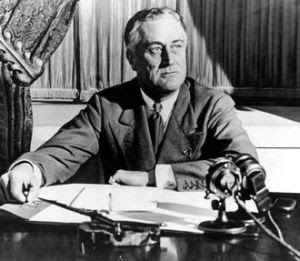
(Eileen Ambrose) - You hear lots of comparisons between our current economic troubles and the Great Depression. One big difference: Back then, a worried nation had President Franklin D. Roosevelt and his fireside chats.
In these radio broadcasts, Roosevelt explained the crisis of the moment and what steps he and Congress were taking to fix it. He encouraged Americans to play their part, whether it was to have patience or make sacrifices. Continued
Oct 18, 2008
A new clue to mystery of sunken Civil War sub

CHARLESTON, S.C. (AP) - It's long been a mystery why the H.L. Hunley never returned after becoming the first submarine in history to sink an enemy warship in 1864, but new research announced Friday may lend credence to one of the theories.
Scientists found the eight-man crew of the hand-cranked Confederate submarine had not set the pump to remove water from the crew compartment, which might indicate it was not being flooded. Continued
Oct 17, 2008
Two Generals, Still Maneuvering
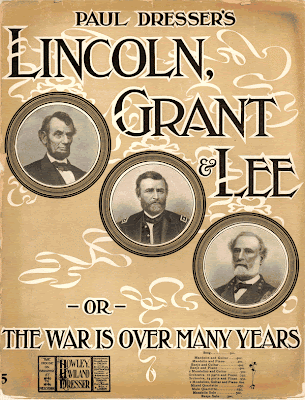
(NYTimes) - “Grant and Lee in War and Peace,” which opens on Friday at the New-York Historical Society, is a rejiggering of an exhibition mounted last year by the Virginia Historical Society in Richmond, where it was called “Lee and Grant.”
The flip-flop in billing is partly a nod to local bias and to the fact that Grant is, after all, buried right here in New York, where he was a bit of a substance abuser and lost a fortune on Wall Street — he was one of us, in other words — while in Richmond they prefer the white-bearded patriarch who seemingly had no faults at all. But the title switch is also a reflection of the way these two generals, implacable opponents on the battlefield, have been linked by posterity in push-me-pull-you fashion, so that the reputation of one can’t go up unless the other’s sinks. Continued
Photo: Library of Congress
Oct 16, 2008
Goose Goslin
 (Wikipedia) - Leon Allen Goslin (October 16, 1900 – May 15, 1971), better known as Goose Goslin, was a left fielder in Major League Baseball known for his powerful left-handed swing and dependable clutch hitting.
(Wikipedia) - Leon Allen Goslin (October 16, 1900 – May 15, 1971), better known as Goose Goslin, was a left fielder in Major League Baseball known for his powerful left-handed swing and dependable clutch hitting.
... The 20-year-old Goslin was called up to the major leagues to play for the Washington Senators for the last two weeks of the 1921 season. He had a promising .351 on base percentage in 14 games in 1921 and became a starter for the Senators in 1922.
Goslin played 93 games in 1922 and became a fixture for the Senators in left field until 1930. Continued
Oct 15, 2008
The end of history and the last camera
The other night, I got to try out the new Canon 50D, which sports not only 6400 ISO, but 12,800 ISO as well. I only had time to try it out in my suburban neighborhood, but I did get to try it at night, and with today's economy, the suburbs themselves (as we know them) could possibly be a disappearing thing, so I was reasonably happy.
The light sensitivity seems to be excellent, but it's noisy at the extreme end. Still, the first half hour of use was encouraging, but a dark cul-de-sac on a cloudy night isn't much of a proving ground. It will take some weeks or months to learn what this new machine can really do. The camera has other new features that I don't care much about, I know Canon makes a good dSLR - all I care about is light and noise. I like to joke that every camera I buy will be my last, but that time seems to be getting closer with the 50D.
Canon EOS 50D & EF-S 17-55 f/2.8 IS lens
Mexican workers in US during WWII can get back pay
Chicago attorney Matthew Piers (PEERS) said Wednesday that a San Francisco judge approved the preliminary deal last week.
Thousands of workers known as braceros (brah-SEHR'-ohs) took agriculture and railroad jobs in the U.S. between 1942 and 1946 under agreements between both governments. Continued
Photos: Jack Delano FSA/OWI/LoC
Oct 14, 2008
The Amity Shlaes Horror
I am still, in many ways, a naive idealist, and I still get mad when writers (especially historians) tell lies. Last night, on The Daily Show, Amity Shlaes tried to blame our economic woes first on Lyndon Johnson ("that's a new one," I thought), and then on Fanny Mae. When Jon Stewart called her on it, she backed off.
Apparently, Shlaes is just as weaselly in her book on the Great Depression, according to this article at Slate: "Yet of all the possible ways to measure unemployment, Shlaes chooses the only way that hides the effect of New Deal relief programs and makes it look as though the economy performed as poorly under Roosevelt as under Hoover."
I purchase books by authors left, right, and center, as long as they are honest. For example, I like both Howard Zinn and Richard Brookhiser and even though I lean to the left, I suspect that Mr. Brookhiser would be a far more entertaining dinner guest. More importantly though, is the fact that I think they are both straight shooters. Needless to say, I won't be reading anything by Amity Shlaes.
Oct 13, 2008
Milton Hershey
 (Wikipedia) - Milton Snavely Hershey (September 13, 1857 – October 13, 1945) was a confectioner, philanthropist, and founder of The Hershey Chocolate Company and the "company town" of Hershey, Pennsylvania.
(Wikipedia) - Milton Snavely Hershey (September 13, 1857 – October 13, 1945) was a confectioner, philanthropist, and founder of The Hershey Chocolate Company and the "company town" of Hershey, Pennsylvania.
Hershey was born on a farm near Derry Church, Pennsylvania, the only surviving child of Henry and Fanny Hershey. Due to the family's frequent moves, he dropped out of school after the fourth grade and was then apprenticed to a Lancaster, Pennsylvania printer. The apprenticeship was soon terminated as he did not like the craft and purposely let his hat fall into the printing press. Continued
 Chocolate issued to WW2 troops. Photo courtesy of Hershey's.
Chocolate issued to WW2 troops. Photo courtesy of Hershey's.Oct 12, 2008
STATE BY STATE: A Panoramic Portrait of America
Oct 11, 2008
Emily Dickinson's Secret Lover
 (Slate) - We tend to reserve special roles for our favorite writers—sepulchral Poe; sardonic Mark Twain; sexy, world-embracing Walt Whitman—and resist evidence that contradicts our cherished images. Emily Dickinson in this constellation is forever the lovelorn spinster, pining away in her father's mansion on Main Street in Amherst, Mass.
(Slate) - We tend to reserve special roles for our favorite writers—sepulchral Poe; sardonic Mark Twain; sexy, world-embracing Walt Whitman—and resist evidence that contradicts our cherished images. Emily Dickinson in this constellation is forever the lovelorn spinster, pining away in her father's mansion on Main Street in Amherst, Mass.
We assume that the grand passion behind her poems ("Wild nights—Wild nights! Were I with thee") must have had a commensurate inspiration, whether imaginary, superhuman, or divine. Continued
Oct 10, 2008
Edgewood Arsenal Chemical Agent Exposure
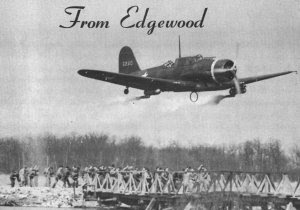
(DoD) - Edgewood Arsenal has been the center of chemical warfare research and development since 1918. Therefore, it is not surprising that Edgewood Arsenal became the research hub for chemical agent testing on human subjects from 1955 thru 1975. The great majority of the use of volunteers in medical (chemical) research occurred at this installation.
From 1955 until 1975, the Army Chemical Corps Medical Department conducted classified medical studies involving nerve agents, nerve agent treatments (antidotes), psychochemicals (hallucinogenic drugs), irritants, and blistering agents. The purpose of the studies was to ensure that the U.S. military could adequately protect its Service members from possible wartime exposures to chemical warfare agents.
As part of this effort, the Army conducted testing on approximately 7,000 volunteers at Edgewood Arsenal. These studies exposed participants, with their consent, to a number of different chemicals. The study objectives were to determine specific health effects associated with exposure (particularly at low dosages), to assess various pre- and post-exposure medical treatments, and to evaluate the effectiveness of personal protective equipment in preventing exposure. Continued
Books to read your children during a financial crisis
(Erica S. Perl) - The first time I heard the word recession, I was 10 years old. It was 1978, and my parents, like everyone we knew, were cranky and stressed out about gas shortages and rising food prices. One of the ways I coped was by burying my nose in books and discovering kids who had it worse than I did. Like Ramona Quimby, whose dad got fired and took up residence on the couch. Continued
The C&O Canal completed
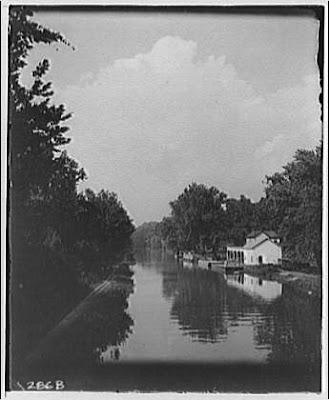
(LoC) - On October 10, 1850, the Chesapeake & Ohio Canal was completed and opened for business along its entire 184.5 mile length from Washington, DC to Cumberland, Maryland. Sections of the canal opened for navigation as they were completed; from Georgetown in Washington, DC to Seneca, Maryland in 1831; then to Harpers Ferry in 1833; to Hancock in 1839; and finally to Cumberland in 1850. Continued
Oct 9, 2008
United States Naval Institute Founded
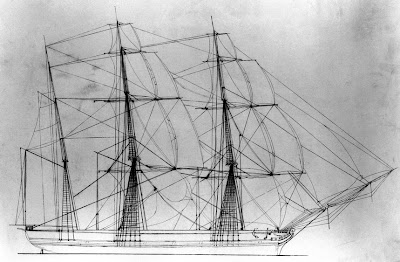
(USNI) - The U.S. Naval Institute has been a fixture at the U.S. Naval Academy since its founding in 1873 by a group of 15 naval officers who began meeting to discuss the serious implications of a smaller, post-Civil War Navy and other matters of professional interest. The Naval Institute's headquarters on the grounds of the Naval Academy have a commanding view of the Severn River and the cemetery, where lie some of the most prominent heroes in Navy and Marine Corps lore.
The founding vision was to create a forum for the exchange of ideas, to disseminate and advance the knowledge of sea power, and to preserve our naval and maritime heritage. Continued
Illustration: Library of Congress
Oct 8, 2008
Historical Beginnings of The Federal Reserve
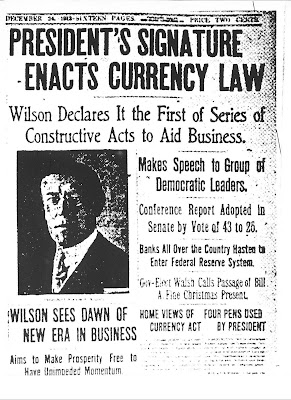
At 6:00 P.M. on December 23, 1913, President Woodrow Wilson entered his office. He was smiling as he looked around the circle of friends and associates who had assembled there. Spotting Carter Glass, the slightly built but exceedingly influential congressman from Virginia, at the far end of the room, the President beckoned him to join Senator Robert Owen of Oklahoma at his side. After shaking Glass’s hand warmly, the President sat down at his desk and, using four gold pens, signed into law the Federal Reserve Act.
As Arthur S. Link, Wilson’s principal biographer, has written, "Thus ended the long struggle for the greatest single piece of constructive legislation of the Wilson era and one of the most important domestic Acts in the nation’s history.’’ Continued
Oct 7, 2008
Save neon signs, fans urge
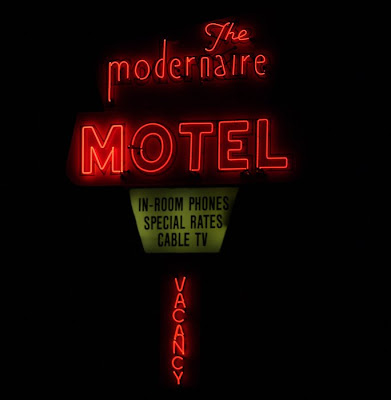
CHICAGO (USA Today) - The neon signs advertising "Siegler Heaters" and "Martin Incinerators" on a Milwaukee Avenue appliance store are pretty beat up, and the metal that supports the glass tubes is rusted through in places.
To photographer Dan Zamudio, though, they are works of art. "They're great, but they'll probably be torn down soon," he says.
Zamudio has a passion and concern for the neon signs that for decades have added sparkle and color to city streets. Landmarks Illinois last month put Chicago's large-scale neon signs on its endangered watch list. They "are a testament to the art of the neon sign maker as well as to the spirit of their times," the preservation group said. Continued
Photo: Nightening
Audubon’s Species: Bird Art, in All Its Glory
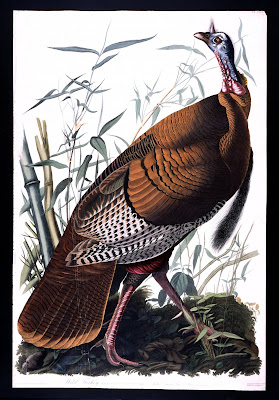
(NYTimes) - In 1812, John James Audubon filled a wooden box with about 200 of his paintings of American birds and left it with a relative for safekeeping while he went off on one of his many trips. When he returned to retrieve the paintings, he discovered to his horror that they had been destroyed, shredded by nesting rats. Continued
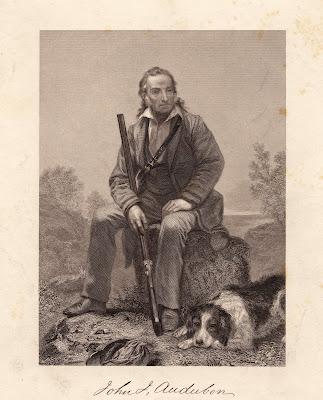
Images: Library of Congress
Caesar Rodney
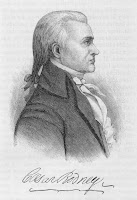 (Wikipedia) - Caesar Rodney (October 7, 1728 – June 26, 1784), was an American lawyer and politician from St. Jones Neck, in Dover Hundred, Kent County, Delaware, east of Dover. He was an officer of the Delaware militia during the French and Indian War and the American Revolution, a signer of the Declaration of Independence, a Continental Congressman from Delaware, and President of Delaware during most of the American Revolution. Continued
(Wikipedia) - Caesar Rodney (October 7, 1728 – June 26, 1784), was an American lawyer and politician from St. Jones Neck, in Dover Hundred, Kent County, Delaware, east of Dover. He was an officer of the Delaware militia during the French and Indian War and the American Revolution, a signer of the Declaration of Independence, a Continental Congressman from Delaware, and President of Delaware during most of the American Revolution. Continued






